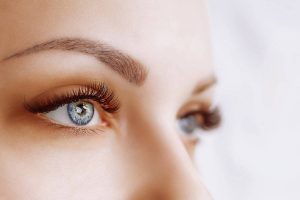Dry Eye: Causes and Treatment
- Posted on: Sep 15 2020
 Dry eye, also known as dry eye syndrome or keratoconjunctivitis sicca, is a chronic condition that can affect your enjoyment of many of life’s pleasures. Reading, driving, watching a movie or wearing contact lenses may all become a struggle as you blink and rub your eyes throughout the day.
Dry eye, also known as dry eye syndrome or keratoconjunctivitis sicca, is a chronic condition that can affect your enjoyment of many of life’s pleasures. Reading, driving, watching a movie or wearing contact lenses may all become a struggle as you blink and rub your eyes throughout the day.
Here, experienced New York City ophthalmologist Dr. Gregory Pamel reviews causes and treatment options for dry eye.
Oasis of Tears
Your tears do more than show emotion. The fine layer of moisture on the surface of your eye protects sensitive tissues, lubricates eye movement and promotes clarity of vision. This layer is actually comprised of water, oil and mucus, and a deficiency in any of these three can lead to dry eye.
That is why sufferers may, paradoxically, experience watery eyes when they have dry eye syndrome. The oils or lipids secreted by the meibomian glands keep tears from evaporating quickly. When the function of these glands is interrupted, the result is evaporative dry eye. Because the watery surface is constantly dissipating, your eye may increase tear production in response.
Causes of Dry Eye
Dry eye syndrome can be triggered by a range of environmental causes, including excessive staring at digital screens, air pollution, windy or dry climate, air conditioning, indoor heating and secondhand smoke.
The chance of developing dry eye increases with age; after menopause, women are more likely to experience dry eye. The condition can also be caused by blood pressure medications, birth control pills and certain diseases.
Symptoms
Symptoms may include pain or a burning sensation in the eyes, itchiness, redness, light sensitivity and blurred vision. Patients may have a feeling that there is a small particle in the eye. This feeling of grittiness or sandiness is usually caused by dry spots, although corneal injuries can also generate the sensation. These causes are sometimes interconnected — severe dry eye can cause perforation, or “ulceration desiccation,” of the corneal epithelium (outer layer of the cornea). For contact lens wearers, excessive dry eye can also increase the chance of infection.
Treatment Options
Fortunately, there are many treatments available to those who suffer from dry eye. After evaluating your eyes, Dr. Pamel will prescribe special eye drops, ointments or gels to keep the surface of your eye lubricated. If the condition persists, other solutions include topical steroids, protective eyewear, punctal plugs and eyelid therapy. Punctal plugs are used to block the pathways that drain tears from your eyes. Eyelid therapy focuses on restoring normal operation of the meibomian glands, ensuring sufficient oils are being produced to lubricate the eye and suppress tear evaporation.
To learn more about effective treatments for dry eye, schedule an appointment with Dr. Pamel at his Manhattan or Astoria office by contacting Pamel Vision & Laser Group today.
Posted in: Dry Eye




